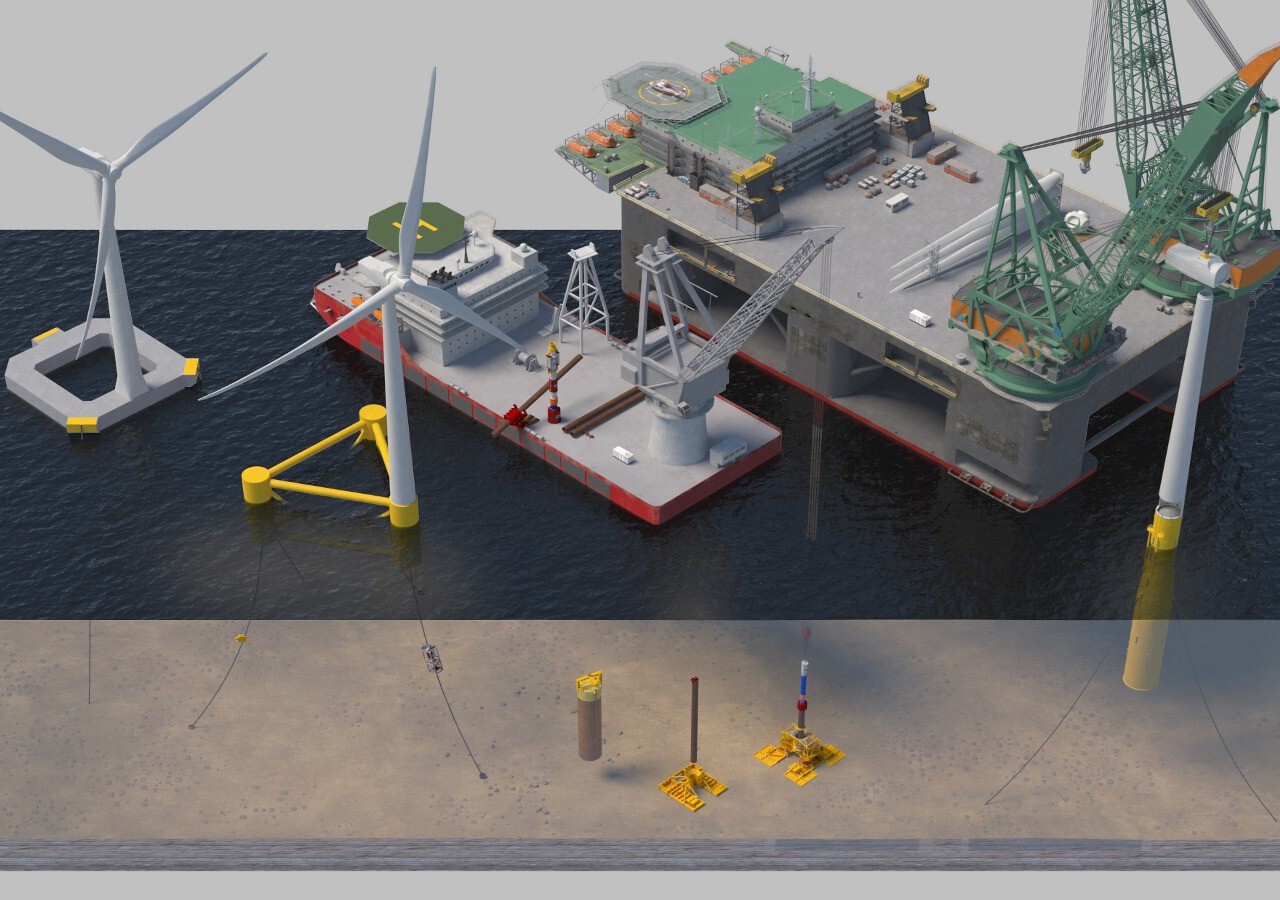The capacity of floating wind
With a new report from DNV GL predicting that the capacity of floating wind will make up more than 20% of the offshore wind market by 2050, the potential of floating wind is everything but up in the air. In fact, the advantages are obvious: Without the water depth constrictions of monopiles and jackets, floating substructures will be able to reach areas of stronger wind allowing turbines to yield a greater energy output; they will remove environmental concerns from shorelines, and, as some structures can be assembled in ports and tugged out to sea by smaller vessels, floating wind offers the potential of local supply chains.
Moving on to large floating offshore wind projects
However, so far, the technology has only been applied in small-scale projects, and, when it comes to the development of larger wind farms, industrialised manufacturing and efficient installation will be of essence to make floating wind as profitable as bottom fixed wind. “What we have seen so far are single floating units, like with oil and gas platforms, moored to the seabed with multiple mooring lines and anchors, but it’ll be interesting to see what methods will be used in larger-scale projects,” says IQIP Business Developer Niels de Vos, who wrote his thesis on floating wind.
However, de Vos strongly agrees that floating wind will open up new opportunities, especially he says, for regions where shallow waters are scarce, like California and Norway, but also for countries where the most attractive sites closer to shore are already allocated.








